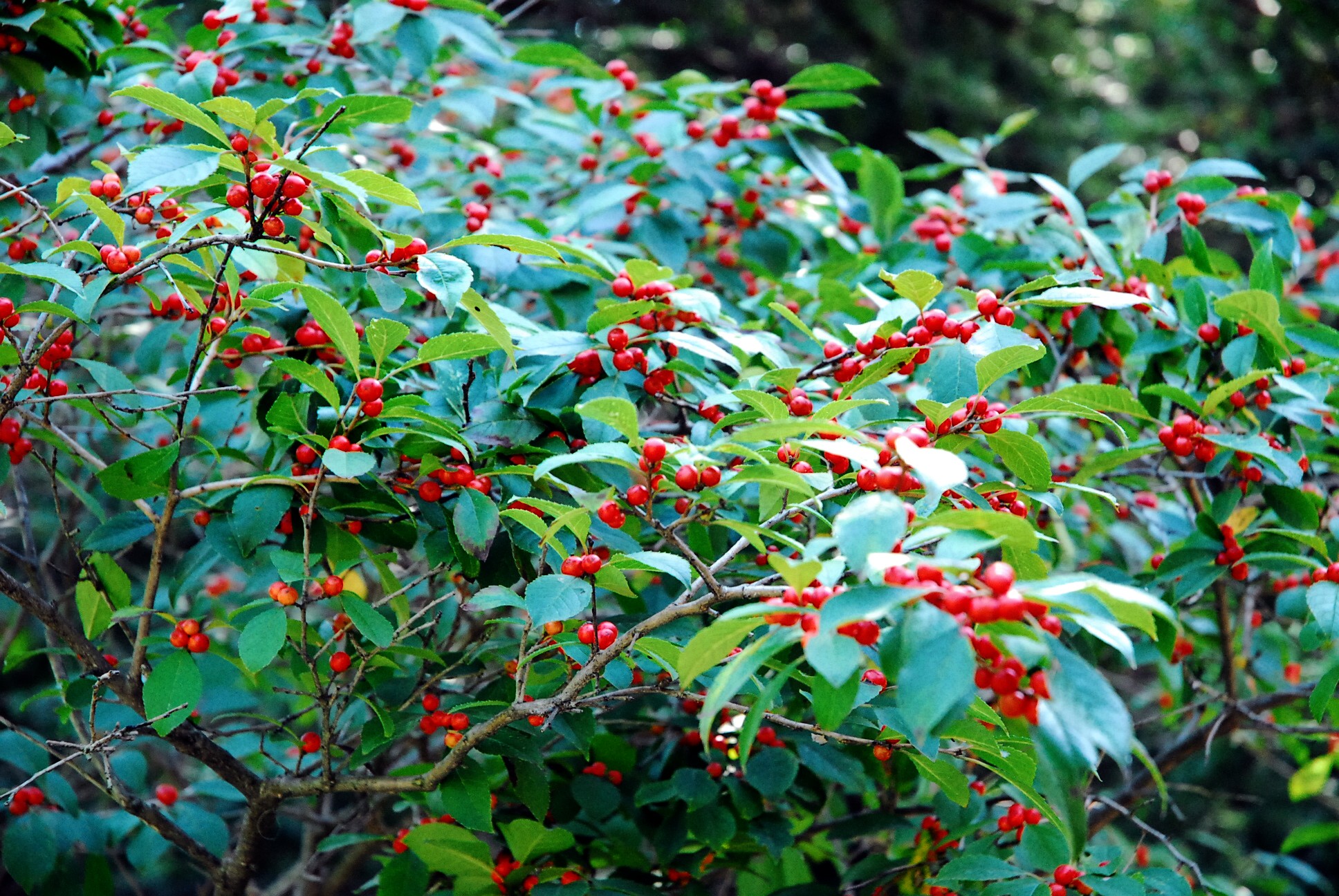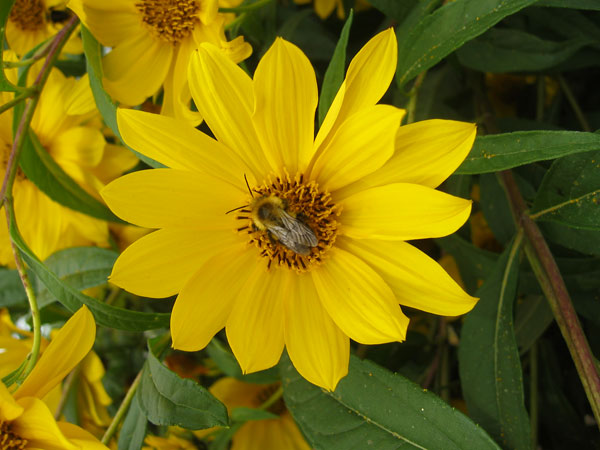
Native Plant Encyclopedia
Growing regionally native plants supports your local and migratory wildlife and can be as rewarding as any of your current favourites. Use our quick or detailed search to find plants native to your province that match the growing conditions of your garden.
Focus on Flora
Plants At-A-Glance
Browse through a few of our Canadian species in these "At-A-Glance" fact sheets. Each page has basic information on some of our Canadian wildlife, with links to detailed, reputable sources such as Hinterland Who's Who and the Government of Canada. Don't see a species you need? Comments or questions? Let us know!
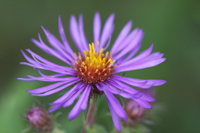
Asters
Blooming anywhere from late summer to late fall, aster flowers range from 1 to 5 cm wide with many long thin petals. They have composite flower heads. This means that each flower is actually a group of smaller flowers consisting of ray flowers (petals) surrounding disk flowers (the centre). Disk flowers are usually yellow or burgundy, which make a nice contrast with the blue, purple, violet, or white ray flowers. An added attraction is their sometimes striking purple stems.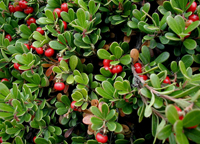
Bearberry
Bearberry leaves are dark green and thick with smooth margins arranged alternatively on the stem; they remain on the bush year-round. Small clusters of white-pink flowers hang down from the tips of branches. This low-growing shrub slowly spreads to form mats, making it a useful groundcover for areas that are not suitable for a lawn or flower garden.
Black-eyed Susans
Also called Brown-eyed Susans, Black-eyed Susans can grow from approximately 30 to 100 centimetres tall on stiff stems that have many bristly hairs. Leaves grow alternately on the stem, with the majority near the base, all having hairs. Flower heads can be up to 10 centimetres wide and are usually a solid yellow with a brown centre but some have variations with both reddy-brown markings and, at times, having a darker yellow near the centre of the flower and paler yellow on the tips of the petals. Rudbeckia hirta blooms in late summer for most areas where they are found.
Bloodroot
The bloodroot flower resembles a water lily and has 8–16 white petals around a golden yellow centre. There are two sepals that fall as the flower opens. The plant’s large, round leaves have several deep lobes. Bloodroot gets its name from its underground stems, also called rhizomes, that contain a red juice. This also inspired its Latin name, Sanguinaria, which means bloody or blood red.
Blue Flag Iris
Blue flag grows from 60 to 90 centimetres tall at maturity. Several showy, purple-blue blooms appear from the end of May to early July. The flowers can be up to 10 cm across and have three showy sepals that gracefully curve down (or flop over, depending on your point of view). They have a splash of white and yellow near the centre and purple veins that probably guide pollinating insects to the food within. There are three paler petals nearer the centre, which are stiffly upright. Several large seeds are formed inside a large brown capsule. Blue flag leaves are long and lance-shaped, like prehistoric grass, sometimes up to 3 cm wide and 80 cm tall.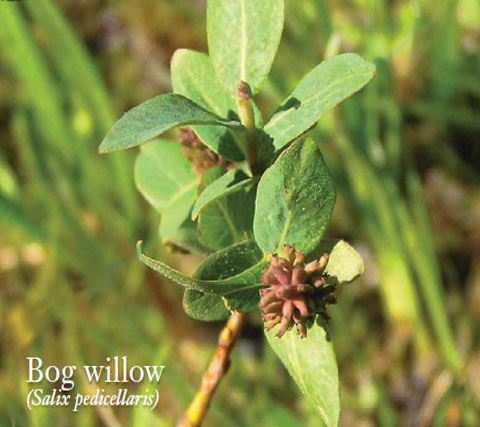
Bog Willow
The bog willow enjoys a rich, wet bog like environment and the stem can grow from 50 to 150 centimetres tall. The leaves alternate, smooth, ovate to elliptic, two to five centimetres long, up to two cm wide, with green on top and bluish-green underneath. It carries green to brown catkins from May to June. This shrub has all male or all female catkins. This willow also has oval or pear-shaped capsules that contain woolly seeds in its two halves.
Cacti of Canada
There are two main groups, or genus, of cacti that grow in Canada. Coryphantha (also known as Escobaria) has one native species. It is round with one or a few showy flowers growing on its top. Opuntia, the other group of cacti in Canada, has three native species all of which have flattened oval pads that branch off from one another, and flowers growing at their tips.
Canada's Columbines
Columbine leaves are typically divided into three-lobed leaflets which give them a delicate look. Anywhere from mid-June to early August, their flower stems reach up above the foliage with blooms that are either nodding or upright. Jones’ columbine is atypical with its compact leaves and short flower stems.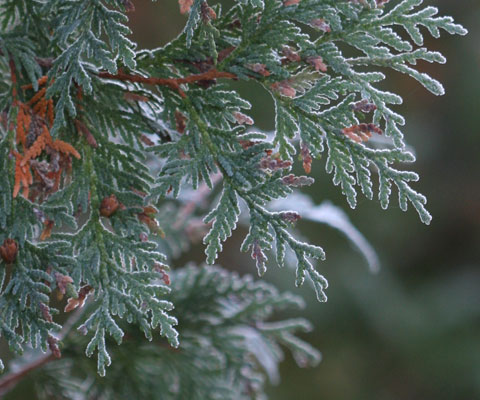
Canada’s Cedars
Whereas the eastern white cedar can grow to 15 to 20 metres tall, its western relation, the western red cedar, can reach a whopping 60 metres. Both can live several hundred years. If the tree has been growing at high altitudes and on cliffs and in cracks where root growth is limited, however, it appears stunted, like small shrubs. They both have green scaly leaves, and their mature bark is brown and stringy-looking. Their seed cones are both small – about one centimetre - but the western species has outward turning points at the end of the scales, whereas the eastern species’ scales are rounded at the tips.